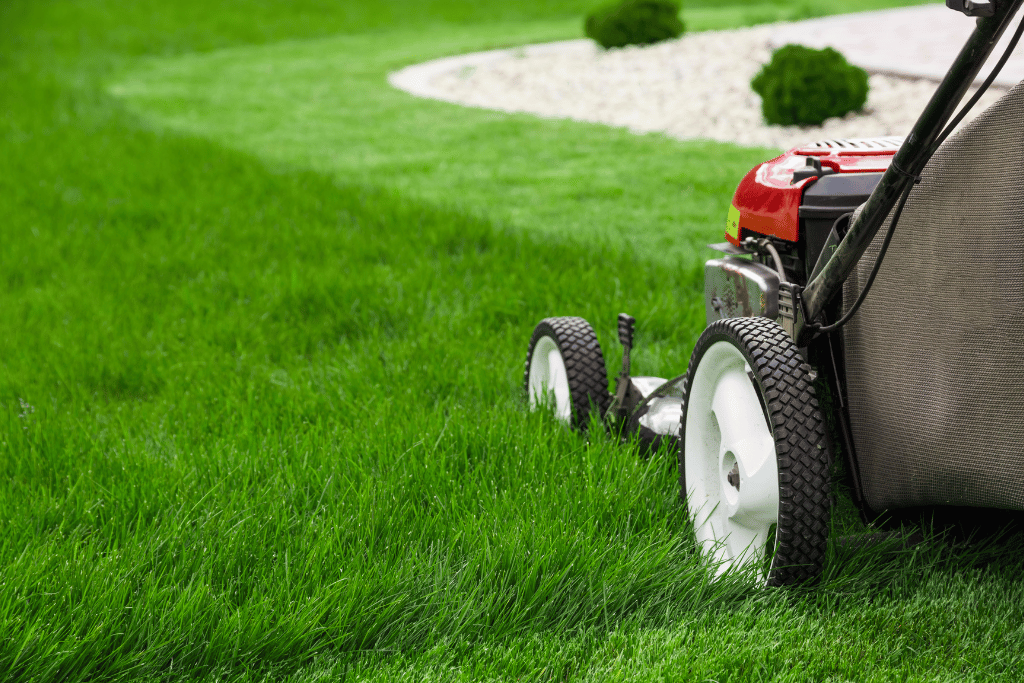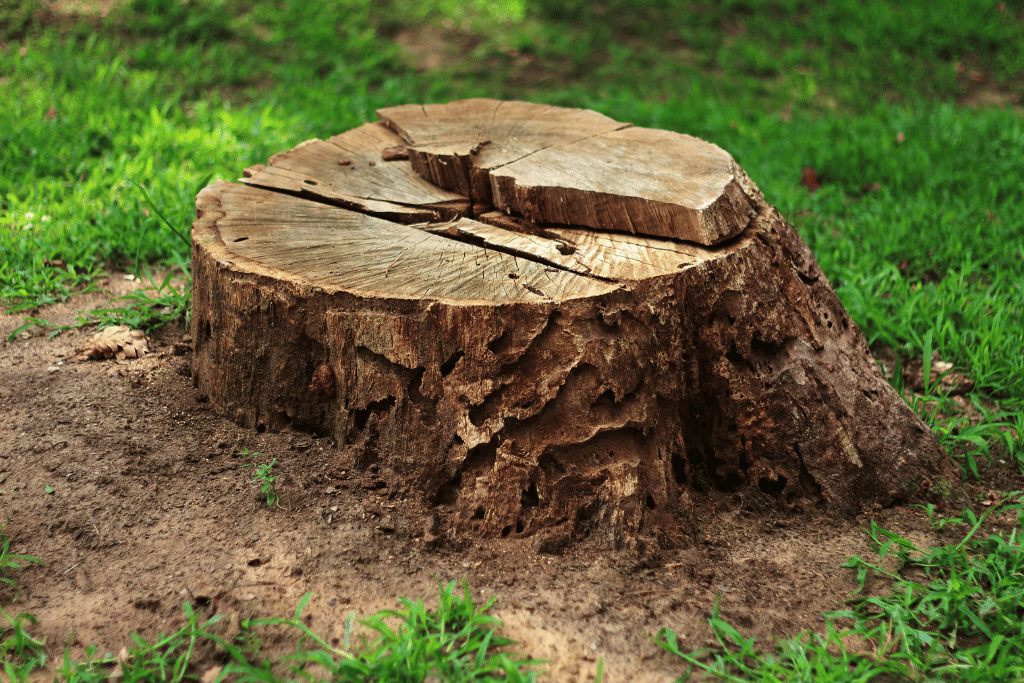
Do you own a yard full of lush green trees, beautiful flowers and a peaceful atmosphere? But lurking in the shadows is an unsightly tree stump that has been stubbornly refusing to leave!
You’ve waited long enough. Make your yard beautiful again by saying goodbye to that pesky tree stump! The answer to all of your problems? Bleach – this simple household item will help you get rid of the tree stump in no time and restore the beauty of your yard instantly.
No more wasting time and money on costly stump removal services! Thanks to this ultimate guide to killing tree stumps with bleach, you can effortlessly defeat the most obstinate stumps in a jiffy. So, bid adieu to digging and pulling for good!
What’s a Tree Stump and why is it a Nuisance in the Garden?
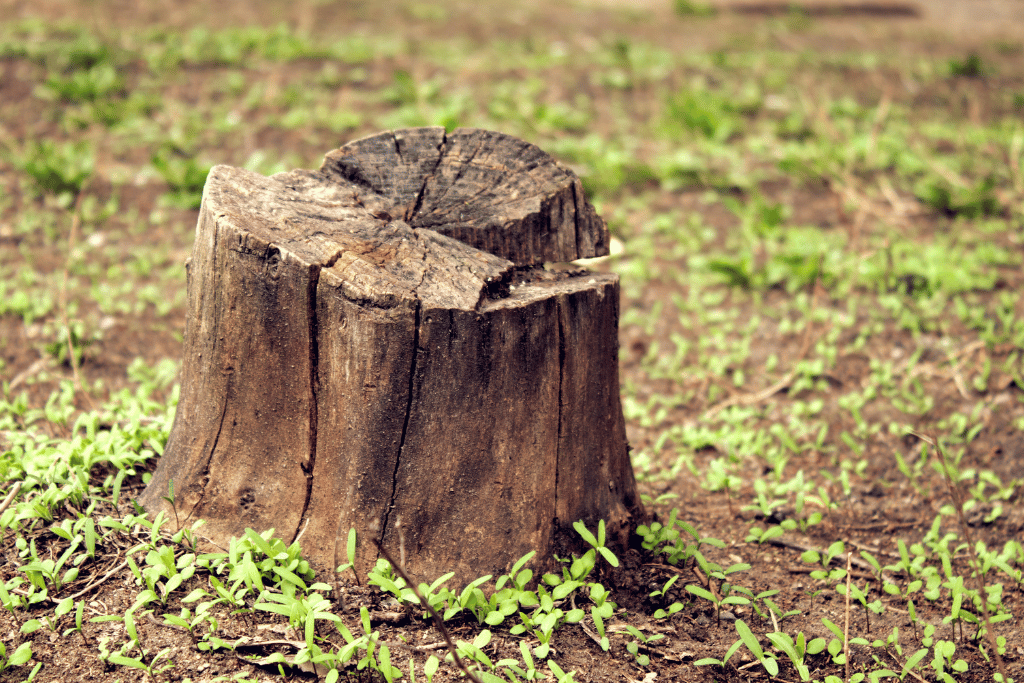
A tree stump is the remains of a tree that has been cut down. It is the part of the tree that is left rooted in the ground, and it can be quite a nuisance in the garden. Consider it an unwelcome guest in your home who won’t leave! Not only does the stump occupy precious space, obstructing views and becoming a risk for tripping, but removing it can be difficult. Nevertheless – with bleach at our disposal, we will effectively send that pesky stump away quickly!
Tree stumps not only look unpleasant, they can also bring hazardous pests like termites and ants, which might breed diseases and fungi in your garden. Therefore, tree stumps are not just an eyesore – their presence may be genuinely dangerous to the health of your outdoor space.
How to Kill a Stump With Bleach – A Step-By-Step Guide
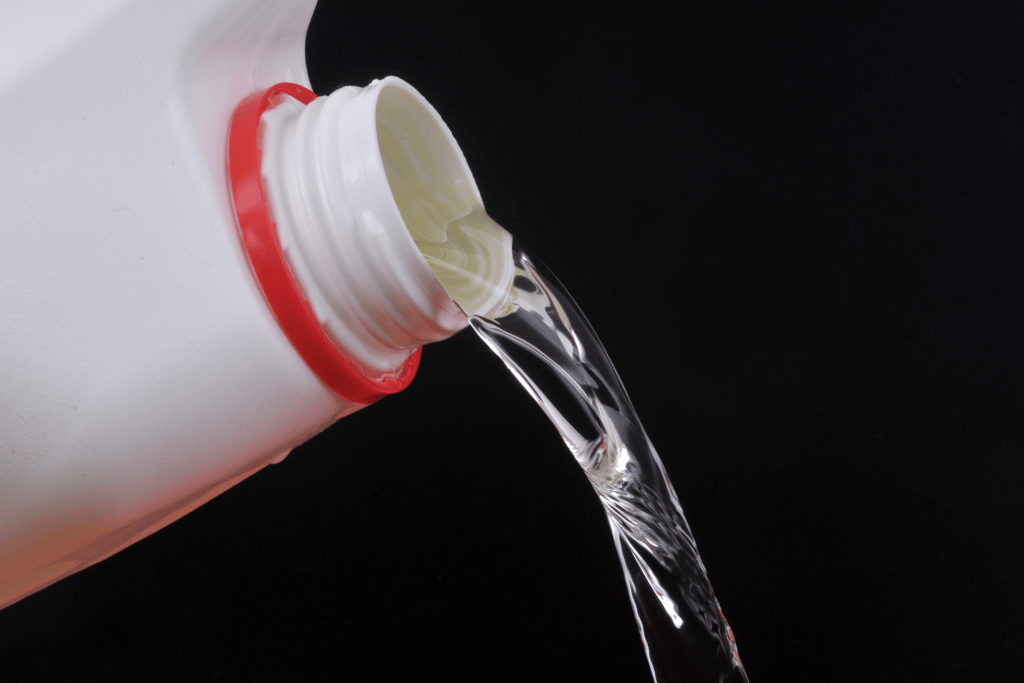
Will bleach kill tree stumps? Absolutely! Bleach is an effective and inexpensive way to kill a tree stump. In just a few simple steps, you can use this common household chemical to safely rid your yard of stubborn stumps.
In this ultimate guide to killing tree stumps with bleach, we’ll cover all the steps you need to take to make that stubborn stump a distant memory. So grab your gloves, pour yourself a tall glass of lemonade, and get ready to discover the magic of killing tree stumps with bleach.
Step 1: Get the supplies ready
You will require the following items to get the job done:
- A cup of bleach (237 ml)
- Water
- A drill
- A drill bit (preferably a large one, like a 1 inch)
- A funnel
- A container
- A pair of gloves
Step 2: Prepare the stump
The first step is to prepare the stump for the bleach treatment. If there are any leaves or branches still attached to the stump, remove them. This will allow the bleach to penetrate deep into the wood and do its magic.
Step 3: Drill holes in the stump
Using your drill and drill bit, drill holes into the top of the stump, spacing them about 6 inches apart. Make sure you drill the holes about 2-3 inches deep. This will help the bleach to seep into the inner layers of the wood, where it can do the most damage.
Step 4: Mix the bleach solution
In a plastic or metal container, mix one gallon of water with one cup (237 ml) of bleach. You can adjust the ratio of bleach to water based on how much of a concentration you want for faster results, but be sure to use caution as bleach can burn skin and eyes. Using the funnel, pour the bleach solution into the spray bottle.
Step 5: Pour the solution
Carefully pour the bleach solution into the holes you drilled in the top of the tree stump, making sure they are full. You should see some bubbling coming from inside the holes, indicating that the solution is reaching down into the roots.
Step 6: Wait it out
Now comes the hard part – waiting. Give the bleach solution time to do its job, which could take anywhere from an hour to three, depending on the size of the stump and the weather conditions.
Step 7: Check for results
After 3 hours, check the stump to see if the bleach has done its job. If it hasn’t, repeat steps 4-6 until the stump is soft and spongy to the touch. This means that the bleach has broken down the wood fibers and killed the stump.
Step 8: Removal
Once the stump is dead, it’s time to remove it. You can do this by digging it out with a shovel, or by using a stump grinder. If you opt for the latter, make sure you follow all safety precautions and rent the equipment from a reputable supplier.
And there you have it, folks, a step-by-step process on how to kill a stump with bleach. It’s a simple, yet effective, method that will save you time, money, and effort compared to other removal methods. Just remember to wear gloves and take all necessary safety precautions, and you’ll be on your way to a stump-free yard!
Does Bleach Kill Tree Roots as Well?
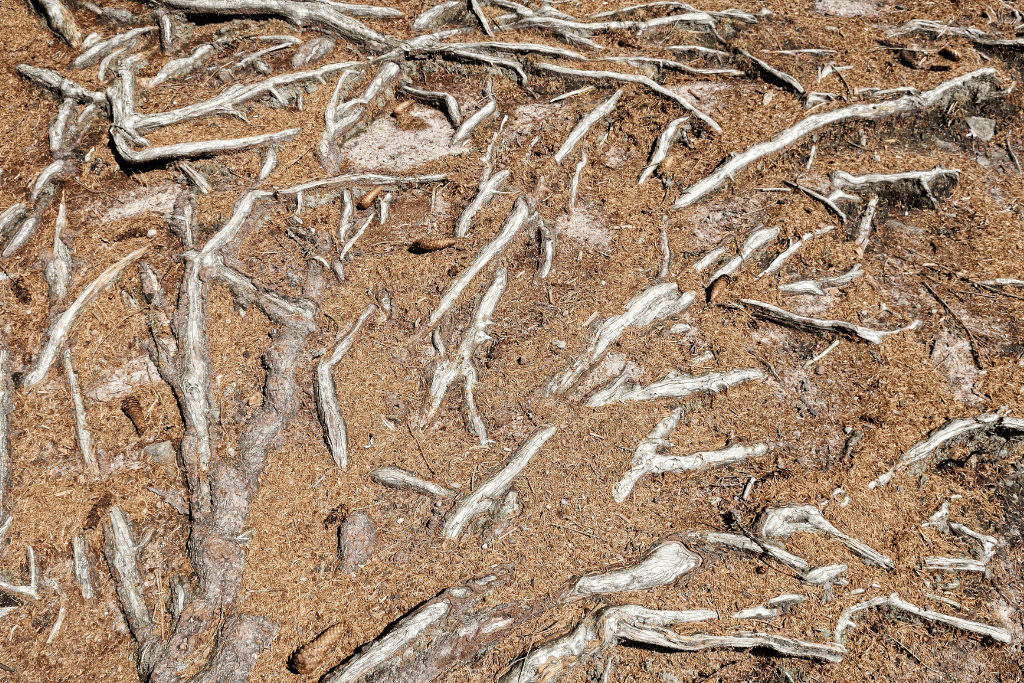
Does bleach kill tree roots? A question that haunts many people when they are trying to remove a tree from their property. After all, the tree roots are what keep the stump rooted in place, so it makes sense to want to eliminate them as well.
The short answer is that yes, bleach can kill tree roots. But it’s important to note that this is not always a guarantee. The effectiveness of using bleach to kill tree roots depends on several factors, such as the size of the roots, the concentration of bleach used, and the length of time the bleach is in contact with the roots.
Bleach is an effective method for killing tree stumps by breaking down its fibers and disrupting the inner layers of wood. The same powerful action occurs when it comes into contact with root systems, corroding them until they rot away from the bleach solution’s penetration.
It’s important to bear in mind that the bleach is less likely to affect larger tree roots than smaller ones. This is mainly because of their thicker outer layer, which impedes the penetration of bleach and its efficiency at reaching the roots.
Which factors determine the effectiveness of killing tree roots with bleach?
- Bleach concentration: Finding the perfect balance between an effective concentration of bleach and one that won’t cause harm to your environment is key when attempting to terminate tree roots. A higher amount of bleach will get the job done quicker, however it also raises the possibility of damaging nearby soil and plants as well. It’s essential to maintain a balance among effectiveness and safety in order to guarantee success with minimal damage.
- Length of time bleach is in contact with the roots: The length of time that the bleach is in contact with the roots is also a factor to consider. In order for the bleach to be effective in killing the roots, it needs to be in contact with them for an extended period of time. This means that the bleach solution needs to be reapplied every few days until the roots have been fully killed.
It’s also important to consider the environmental impact of using bleach to kill tree roots. Bleach can be harmful to the soil, plants, and wildlife in the surrounding area. This means that you should exercise caution and only use bleach as a last resort, when other methods have failed.
So, be very careful when using bleach to eliminate stumps. In case of an error, who knows, you might be killing a tree with bleach unknowingly!
Tips for Avoiding Common Problems When Using Bleach to Kill Tree Stumps
Here are some tips to help you avoid common problems when using bleach to kill tree stumps:
Using too much bleach:
When using bleach to kill tree stumps, it’s important not to use too much. The amount of bleach you need to effectively kill a stump varies depending on the size of the stump and how deep it is rooted. Using too much will not only be wasteful, but could also lead to potential risks such as chlorine gas or water pollution. To avoid this problem, start with a small amount (about one cup) and gradually increase if necessary.
Exposure to rain:
To ensure that the bleach works properly on your tree stump and does not seep into nearby areas, it is essential to cover the exposed area with a tarp or plastic sheet. This precautionary measure will protect against rain washing away any of the applied bleach while also sealing off neighboring terrain from potentially hazardous runoff.
Time is of the essence:
The bleach needs to be in contact with the tree stump and roots for an extended period of time in order to be effective. Don’t be afraid to reapply the bleach solution every few days until the job is done.
Not properly disposing of excess bleach:
To protect the environment when using bleach to kill a tree stump, you must safely dispose of any excess liquid. The best way is to pour it into an airtight container, or dilute it with water before pouring onto soil that won’t affect nearby plants and animals. Remember: Bleach is toxic – so make sure your disposal process does not further harm our planet!
Not following safety precautions:
To eliminate tree stumps safely, it is important that you abide by all safety protocols. This means wearing gloves and eye protection while applying bleach to the stump, as well as making sure your work environment has sufficient ventilation to avoid inhaling hazardous fumes. Moreover, do not mix bleach with other chemicals or endanger children and animals in close proximity of chemical use; keep them away at all times! Doing so will ensure a safe removal process for you and those around you.
By following these tips, you can avoid common problems when using bleach to kill tree stumps and ensure that the job is done safely and successfully.
Conclusion
This brings our guide to killing tree stumps with bleach to an end. Although it may not be the best solution for everyone, it can be a great way to get rid of unsightly tree stumps without the need for costly and time consuming stump grinding.



